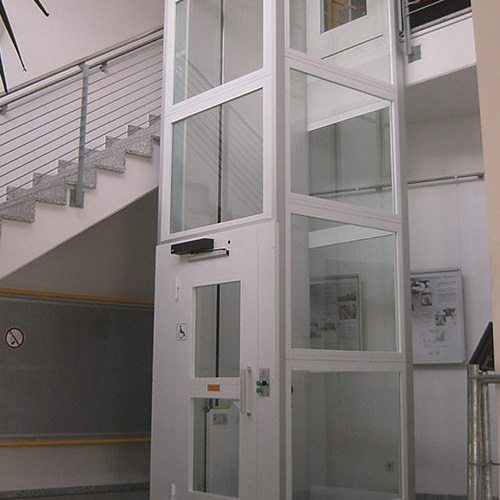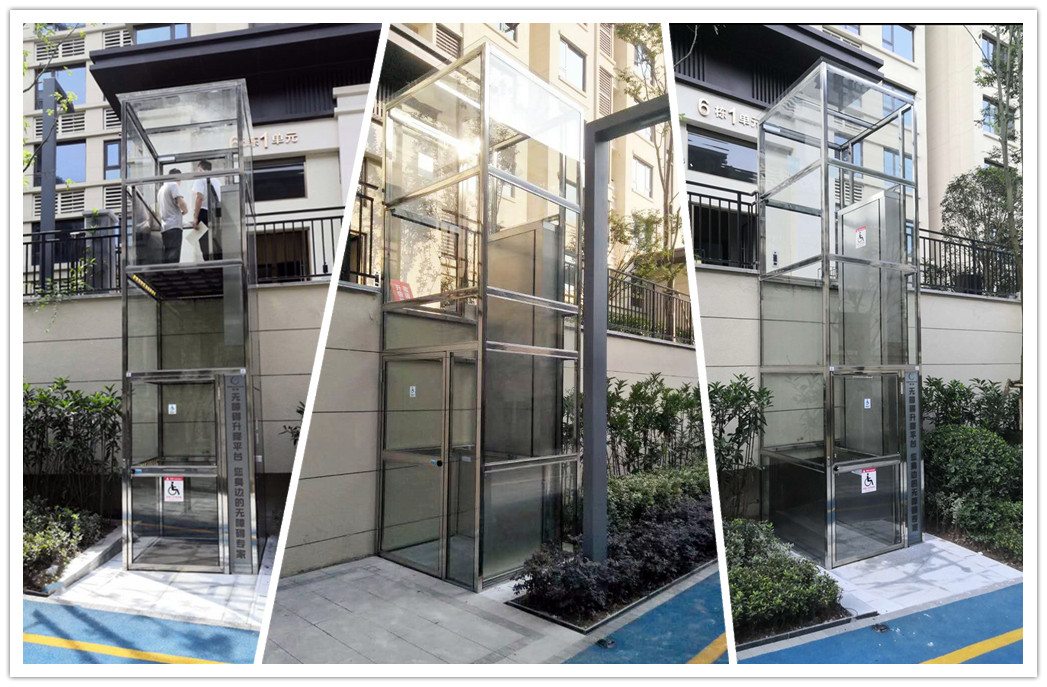What is the difference between a vertical lift platform in a shaft and a small household elevator?

1. Space Efficiency and Structural Simplicity
Hoistway Vertical Platform Lifts require minimal structural modifications compared to traditional home elevators. Their compact design eliminates the need for extensive hoistway construction or deep pits, making them suitable for retrofitting existing buildings. Small home elevators often demand more space for cabin and machinery, which can increase installation complexity and costs.
2. Cost-Effectiveness
With simplified mechanical systems (e.g., screw-drive or hydraulic mechanisms), Hoistway Vertical Platform Lifts are generally more affordable to install and maintain. In contrast, home elevators involve higher costs for cabin construction, advanced control systems, and compliance with stricter safety standards.
3. Accessibility Compliance
Hoistway Vertical Platform Lifts are specifically engineered to meet accessibility regulations, such as ADA guidelines, ensuring compatibility with wheelchairs and mobility aids. Features like low-profile platforms (e.g., 0.15 m/s speed), automatic safety barriers, and non-slip surfaces cater to users with limited mobility. Small home elevators, while accommodating, may not always prioritize these specialized accessibility features.
4. Safety Mechanisms
Hoistway Vertical Platform Lifts integrate robust safety systems, including obstruction sensors, emergency stop buttons, and backup power for platform lowering during outages. For example, photoelectric barriers halt movement if obstructions are detected. Home elevators, though safe, often rely on more complex redundancies (e.g., dual braking systems), which can escalate maintenance requirements.
5. Ease of Installation and Maintenance
Hoistway Vertical Platform Lifts are designed for straightforward installation, often requiring only standard electrical circuits (208–240 VAC). Maintenance involves routine checks every six months, focusing on mechanical components rather than intricate cabin systems. Home elevators necessitate frequent inspections of doors, cables, and control panels, increasing long-term upkeep efforts.
Typical Applications:
Residential Use: Ideal for single-family homes with staircases where traditional elevators are impractical.
Public Spaces: Deployed in libraries, hospitals, or transportation hubs to comply with accessibility laws.
Temporary Installations: Suitable for short-term needs due to modular designs.

Hoistway Vertical Platform Lifts offer a practical, cost-efficient solution for vertical mobility, emphasizing accessibility and user safety.
